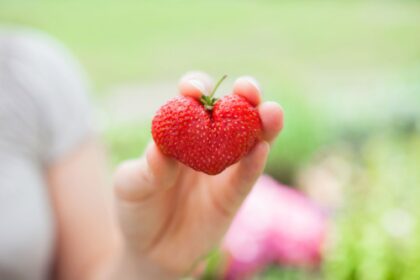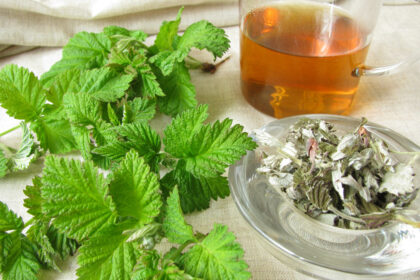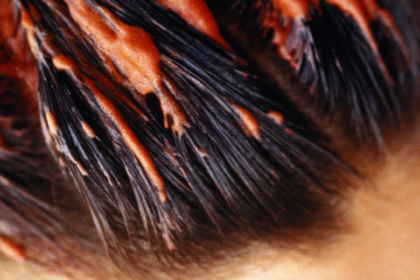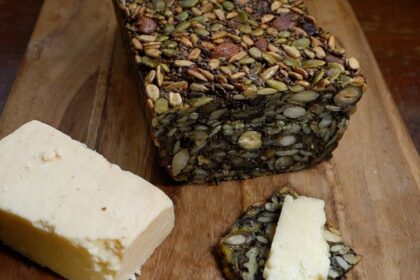In our busy lives, breakfast cereal has become a convenient and quick option for many individuals. Every cereal box I’ve ever seen has boasted about its nutritional ingredients, drilling into our brains that it is the healthiest option for breakfast in the morning.
But even cereals that promote themselves as being a part of a healthy breakfast can be made up of more than 50% sugar by weight. And when you eat a massive amount of sugar the first thing in the day, it can spike your blood sugar.
This will signal to your brain throughout the day that you need more sugar, leading to dips in energy levels and concentration—not exactly what you want to get from the most important meal of the day.
A fluctuation in blood sugar levels can also lead to weight gain and obesity over a long period of time. Because sugary cereals are often marketed to children, this can facilitate an unhealthy lifestyle during key developmental years.
Nutritionists recommend that consumers avoid cereals with more than 10 grams of sugar per serving and choose one with as much fiber as possible to stick with a healthy lifestyle. Check out the end of this article for a simple “build your own” cereal recipe!
Research has shown that a diet with reduced sugar and increased fiber can lead to weight loss and an improved insulin function.
However, have you ever stopped to consider the ingredients lurking within these seemingly harmless boxes?
Most people overlook the importance of examining the components of their daily cereal, unaware of the detrimental effects they may have on their health.
Everything from the manufacturing process and toxic ingredients, to the unwanted additives Understand the truth behind the breakfast cereal industry and learn how to make informed choices for a healthier breakfast.
The Violent Manufacturing Process
The manufacturing process used for boxed cereal, known as extrusion, is a violent and denaturing process that significantly impacts the nutritional value of the final product.

Here are some key points to understand about the violent nature of the extrusion process:
During extrusion, the grains are exposed to extreme temperatures, often reaching up to 400 degrees Fahrenheit. This high heat destroys delicate nutrients, such as vitamins, minerals, and antioxidants, which are essential for our health.
The grains are then subjected to intense pressure and shear forces as they pass through the extruder. This mechanical action breaks down the structure of the grains, altering their nutritional composition.
This process also destroys nutrients but also damages the grains’ natural enzymes and beneficial bacteria. These components play a crucial role in supporting digestion, regulating blood sugar levels, and protecting against chronic diseases.
We are left with highly processed and refined cereals that are quickly digested and absorbed by the body. This rapid absorption can cause a sharp spike in blood sugar levels, leading to energy crashes and increased cravings for sugary foods.
The extrusion process also creates a chemical reaction known as the Maillard reaction, which can lead to the formation of acrylamide. Acrylamide is a potentially harmful compound that forms when starchy foods are cooked at high temperatures. It has been linked to an increased risk of cancer and neurological damage.

After the extrusion process, the cereals may undergo additional steps such as texturizing and coating. Texturizing involves adding fats and sugars to create a desirable texture, while coating involves applying artificial flavors, colors, and sweeteners to enhance taste and appearance.
These additives can further diminish the nutritional value of the cereal while introducing additional artificial and potentially harmful substances.
In summary, the extrusion process used in the production of boxed cereals involves high temperatures, pressure, and mechanical forces that compromise the nutritional integrity of the grains. It leads to the destruction of essential nutrients and enzymes, while also facilitating the formation of potentially harmful compounds. Understanding the impact of this violent manufacturing process emphasizes the importance of seeking healthier breakfast alternatives that preserve the natural goodness of grains.
Toxic Ingredients & Additives:
Breakfast cereals, particularly those marketed to children, are notorious for their excessive sugar content. Studies conducted by the Environmental Working Group (EWG) revealed that children’s cereals contain over 40 percent more sugar than those marketed to adults.
Glyphosate
Non-organic cereals often hide high fructose corn syrup under the ambiguous label of “sugar.” Glyphosate, present in toxic pesticides, frequently finds its way into breakfast cereals through the cultivation of corn and other crops.
Most store-bought cereal brands utilize sugar and corn derived from genetically modified organisms (GMOs). These GMO crops are often exposed to glyphosate, a known herbicide associated with cancer.

Disturbingly, a 2019 study by the Environmental Working Group discovered alarming levels of Monsanto’s glyphosate in our food. Independent research further links glyphosate exposure to various diseases, including dementia, cancer, and diabetes.
Artificial Food Dyes
Petroleum-based food dyes, such as Red 40, Yellow 5 & 6, and caramel color, pose significant health risks. These additives have been associated with hyperactivity, behavioral issues in children, allergic skin reactions, and even cancerous tumors in animal studies.
Hydrogenated Oils
Partially hydrogenated oils, often found in cereals, contain trans fats. Consumption of trans fats is linked to numerous health problems, including cancer, heart disease, and compromised immunity.
Harmful Preservatives
Butylated Hydroxytoluene (BHT), an endocrine disruptor, is a toxic preservative commonly used in cereals. Multiple studies on animals have shown a potential link between BHT and cancer. The FDA is currently reevaluating the safety of BHT in food products.
Another problematic additive, BHA, has been identified as a potential human carcinogen by the National Institutes of Health’s National Toxicology Programs.
Top Breakfast Cereal Brands to Avoid

7 Surprising Cereals That Do Not Qualify as ‘Healthy’ Based On The FDA’s new definition:
- Raisin Bran (9g of added sugars)
- Honey Nut Cheerios (12g of added sugars)
- Corn Flakes (300mg of sodium; 4g of added sugars)
- Honey Bunches of Oats, Honey Roasted (8g of added sugars)
- Frosted Mini Wheats (12g of added sugars)
- Life (8g of added sugars)
- Special K (270mg of sodium; 4g of added sugars)
Other Unhealthy Cereals To Avoid:
- Honey Smacks – One serving of this cereal may only be 110 calories, but there’s a whopping 16 grams of sugar in it. Not to mention, there’s only 1 gram of fiber and only 2 grams of protein. The cereal also contains trans fats, which can increase your risk of developing heart disease, stroke, or diabetes. Oh, and this cereal is 55 percent sugar in weight.
- Trix – I’m not sure which I liked more: the actual Trix cereal or those hilarious commercials featuring the beloved rabbit. Regardless, this cereal is loaded with 10 grams of sugar per 1 cup serving. Trix also contains high-fructose corn syrup, which is often linked to a higher risk of obesity.
- Cinnamon Toast Crunch – A personal favorite of mine, Cinnamon Toast Crunch tops the list with 9 grams of sugar and 130 calories only ¾ of a cup. This cereal also contains 3 grams of fat and very little protein or fiber.
- Oreo O’s – It’s not completely hard to believe that a cereal named after a cookie is not the healthiest option for breakfast. This cereal is pretty unhealthy, with 13 grams of sugar. Maybe you should just stick to regular Oreo cookies as a once in a while treat.
- Cocoa Krispies – Cocoa Krispies is an ode to my childhood breakfasts. Unfortunately, 3/4 cup of this chocolatey cereal contains 120 calories with 12 grams of sugar. With no fiber and just 1 gram of protein, this cereal presents a consumer with limited nutritional value.
- Fruit Loops – Kellogg’s Fruit Loops are 44 percent sugar by weight, with 12 grams per serving. The cereal also contains partially hydrogenated oils, a source of trans fats. For those reasons, it’s best to stay away from this colorful, fruity cereal.
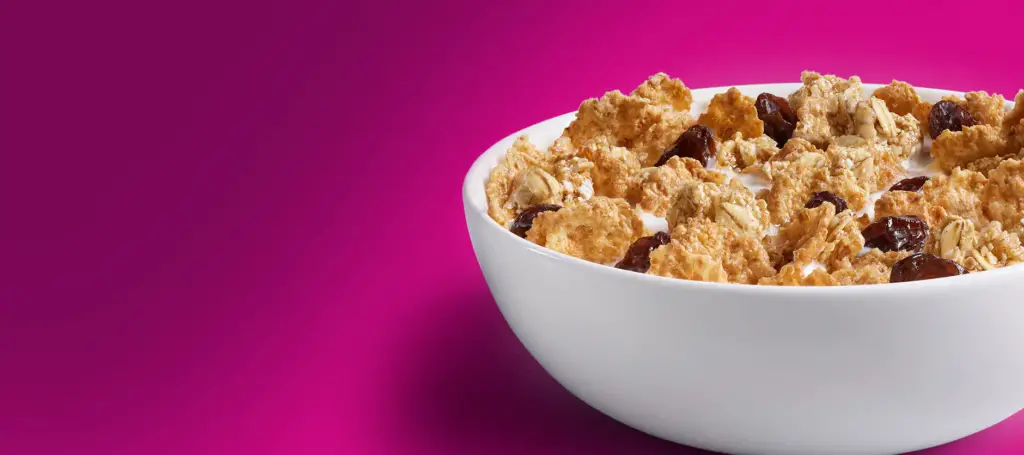
- Raisin Bran – Shockingly, this supposedly-healthy cereal actually contains some of the most sugar of all the cereals on the list. With a whopping 18 grams of sugar per cup, Raisin Bran also is higher in calories and contains high-fructose corn syrup. What puts it lower on the list, however, is its 7 grams of fiber and 5 grams of protein.
- Fruity Pebbles/Cocoa Pebbles – Fruity Pebbles and Cocoa Pebbles are tied at the eighth spot on this list of the worst cereals for you. You might prefer one over the other, but both of these cereals are not the healthiest. They contain 9 and 10 grams of sugar per serving, artificial colors, flavors, and perservatives.
- Lucky Charms – Unsurprisingly, General Mill’s famous marshmallow-filled cereal makes the list of the worst cereals. Just 3/4 cup of Lucky Charms contains 110 calories, 10 grams of sugar, just 2 grams of fiber and protein each. Although this cereal has no trans fats or high fructose corn syrup, it should not be consumed on the regular.
- Frosted Flakes – 10 grams of sugar and a serious lack of fiber and protein place this favorite on the list of worst cereals. I know, Tony the Tiger is just as disappointed as both you and I are. Frosted Flakes is a tried-and-true breakfast staple for most children. It’s a sad day to see this box of cereal on the list.
My research showed me that most of my favorite cereals I grew up eating don’t exactly provide much nutritional value. Perhaps we should view these sugary cereals as more of an occasional treat, rather than a daily breakfast. There are certainly better, healthier ways to start your mornings.
Opting for Organic Breakfast Cereal Alternatives
When you choose to consume cereals, prioritizing organic options can help you steer clear of many of the health concerns associated with conventional brands. Organic cereal options are typically made with wholesome ingredients, devoid of toxic additives, and free from GMOs and harmful pesticides.
Make Your Own Healthy Cereal At Home:
Step 1: Choose Your Base Ingredients
Start by selecting a variety of whole grains as the foundation of your cereal. Options include rolled oats, quinoa flakes, millet, buckwheat groats, or a combination of these. Whole grains provide fiber, essential minerals, and sustained energy.
Step 2: Add Nutritious Nuts and Seeds
Enhance the nutritional profile of your cereal by incorporating a mix of nuts and seeds. Consider almonds, walnuts, flaxseeds, chia seeds, sunflower seeds, or pumpkin seeds. These ingredients provide healthy fats, protein, and additional fiber.
Step 3: Incorporate Dried Fruits
For a touch of natural sweetness and added flavor, include dried fruits in your cereal mix. Options like raisins, cranberries, chopped dates, or dried apricots work well. Make sure to choose unsweetened varieties without any added sugars or preservatives.
Step 4: Spice it Up
Get creative with spices and flavorings to enhance the taste of your homemade cereal. Consider adding cinnamon, nutmeg, vanilla extract, or a sprinkle of cocoa powder. These spices add depth and warmth to your cereal without the need for excess sugar.
Step 5: Mix and Store
In a large mixing bowl, combine all your chosen ingredients in the desired proportions. Stir well to ensure an even distribution of flavors. Once thoroughly mixed, transfer your homemade cereal to an airtight container for storage.
Step 6: Serve and Enjoy
When you’re ready to enjoy your homemade cereal, simply portion out the desired amount into a bowl. You can enjoy it with your choice of milk, whether it’s dairy, almond, soy, or any other plant-based milk. You can also add fresh fruits or yogurt for added texture and nutrition.
Step 7: Experiment and Customize
Don’t be afraid to experiment with different ingredient combinations to suit your taste preferences. You can vary the types of grains, nuts, seeds, and fruits to create a new flavor profile each time you make your cereal. Feel free to get creative and add additional ingredients like coconut flakes, cacao nibs, or even a touch of natural sweeteners like honey or maple syrup if desired.
By making your own cereal at home, you have full control over the quality of ingredients and can enjoy a wholesome, nutritious, and personalized breakfast option. Say goodbye to unhealthy store-bought cereals and start your day on a healthier note with your very own homemade cereal creation.
Concluding Breakfast Cereal:
The illusion of a wholesome breakfast portrayed by conventional cereal brands has been shattered. It’s time to take control of our breakfast choices and prioritize our health.
By understanding the manufacturing processes, identifying toxic ingredients and additives, and opting for organic alternatives, we can make informed decisions to protect ourselves and our loved ones from the hidden dangers of breakfast cereals. Choose wisely, nourish your body, and start each day on a truly healthy note.

